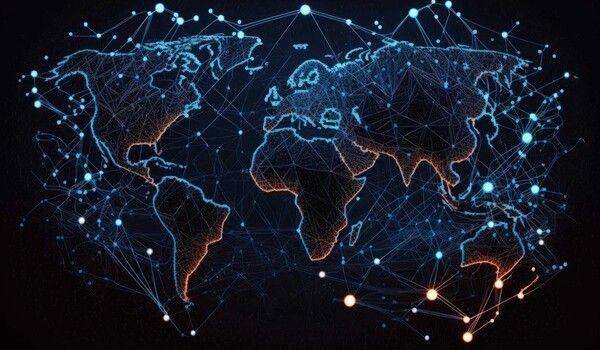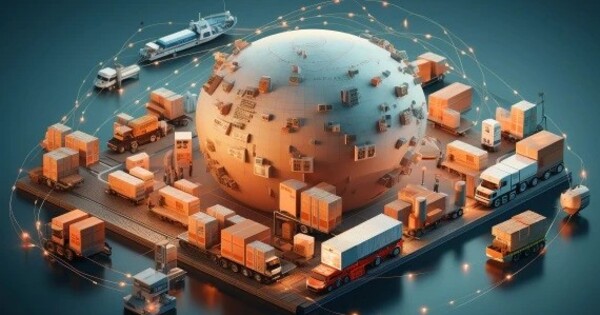Understanding supply networks has the potential to significantly improve supply security, promote and objectively monitor the green transition, boost human rights compliance, and reduce tax evasion. In a recent article in Science, a research team led by the Complexity Science Hub stressed the necessity for international collaborations to achieve such understanding.
Even though many businesses only know their direct trading partners, they rely on several other supply relationships along the supply chain. A supply deficit anywhere in this supply network can impact suppliers, suppliers of suppliers, and so on, as well as customers and their customers’ customers. “Such supply disruptions caused an estimated loss of 2% of global GDP in 2021 – approximately $1.9 trillion – and significantly contributed to the current high inflation,” says Anton Pichler, a CSH researcher.
UNIMAGINABLE OPPORTUNITIES FOR THE FIRST TIME
“For a long time, it was unthinkable to analyze the global economy at the company level, let alone its complex network of supply interconnections,” Pichler explains. That is changing now.
For over a century, only aggregated data could be studied, such as the average values of whole industry sectors, such as the automotive industry. As a result, it was impossible to forecast how individual company failures would effect the system. What happens to the economy when a certain company discontinues production? What happens if an earthquake paralyzes an entire region?
For individual companies, it’s nearly impossible to ensure that all trading partners, their suppliers, and their suppliers’ suppliers operate environmentally friendly and in compliance with human rights. If this were centrally documented in a gigantic network, it could be more easily ensured.
Anton Pichler
13 BILLION SUPPLY CONNECTIONS
Thanks to a new generation of data on the company level and a set of new analysis methods, we are entering a new era. Despite the vast amount of data — there are approximately 300 million companies worldwide, each with an average of 40 domestic suppliers, resulting in up to 13 billion supply connections – researchers can now map the connections between individual companies.
OPTIMAL APPROACH: VALUE ADDED TAX DATA
Currently, value-added tax (VAT) data is the most promising option for reconstructing reliable large-scale supply networks. Several countries like Spain, Hungary, or Belgium use a standardized VAT collection that practically records all domestic business-to-business (b2b) transactions. With these, one can map the entire national trade of a country.
TAX EVASION — €130 BILLION
In most countries like Germany, Austria, or France, where VAT is not collected for individual b2b transactions but only accumulated over a specific period, such a mapping is currently not possible. “The standardized b2b collection could reduce administrative overheads for companies and would contribute substantially to tax compliance,” says CSH researcher Christian Diem, co-author of the study. Estimates suggest that VAT-related fraudulent activities in the European Union (EU) amount to €130 billion annually. A tax gap that could be massively reduced.

CLIMATE, HUMAN RIGHTS, AND SUPPLY SECURITY
The researchers stress that it is not only tax evasion but also other major challenges of our time depend on the detailed knowledge of supply networks — ideally on a global scale. “For individual companies, it’s nearly impossible to ensure that all trading partners, their suppliers, and their suppliers’ suppliers operate environmentally friendly and in compliance with human rights. If this were centrally documented in a gigantic network, it could be more easily ensured,” emphasizes Pichler.
ONE-FIFTH OF THE GLOBAL ECONOMY ON A MAP
The next phase is to link trade data from several countries. The EU now registers commerce in goods between its member states at the firm level. If they included services and linked them to VAT data, this may result in a comprehensive cross-border company-level network. According to the authors, this would equal over 20% of world GDP. The European Commission established the legal framework by proposing “VAT in the Digital Age.” “Unfortunately, this is far from being realized,” says Stefan Thurner, an author of the commentary and President of the Complexity Science Hub. “So far, we do not have a single case where the supply chain networks of any two countries have been joined and merged.” “This would be an important next step.”
INTERNATIONAL ALLIANCE
To produce a genuinely international picture of supply interconnections, hundreds of datasets must be combined, analytical tools developed, and an institutional framework, as well as safe infrastructure for storing and processing massive volumes of sensitive data, must be established.
“To advance this endeavor, a strong international alliance of various interest groups is required, including national governments, statistical offices, international organizations, central banks, the private sector, and academia,” Thurner states. The first scientific partnership, which includes authors from macroeconomics, supply chain studies, and statistics, now seeks to provide the groundwork. The researchers aim to encourage others to join their efforts.
















